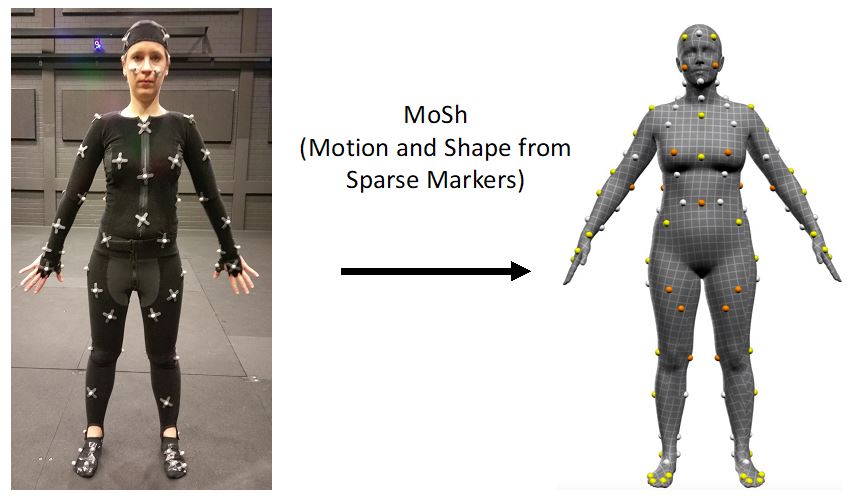A post-doctoral fellow joined the BioMotionLab two years ago and continued some compelling work on the perception of realistic virtual characters. She recently wrote a conference paper on attractiveness and confidence in walking style of these virtual characters – an original contribution in a cutting-edge field.
In 2019, then PhD candidate Anne Thaler secured a VISTA postdoctoral fellowship and joined Professor and Canada Research Chair Nikolaus Troje’s BioMotionLab at York University and the Centre for Vision Research. She has a compelling research focus: She studies realistic virtual characters in virtual reality (VR) and related perception around these animated characters.
With collaborators, including Troje and researchers from the Max Planck Institute for Intelligent Systems Tübingen (Germany), she recently wrote a short fascinating paper, “Attractiveness and Confidence in Walking Style of Male and Female Virtual Characters,” for the 2020 IEEE Virtual Reality Conference. Here, she investigated how perceived attractiveness and confidence relate to body shape and walking motion of these virtual characters.

“Our results indicate that attractiveness and confidence relate both to the shape and walking motion of animated characters,” she says. “This finding has important implications for virtual character animation.”
This is an exciting new area of research. Animated virtual characters are, or course, key components in many VR environments, from interactive computer games to training modules, and much progress has been made in developing 3D, life-like faces and body shapes over the last two decades.
But there’s not much research on biological and personality inferences made from the shape and motion of these virtual characters' bodies. This work fills an important void.

“Human motion is rich in socially relevant information, such as a person’s identity, health and biological sex. Humans are extremely sensitive to animate motion patterns and highly efficient in extracting information encoded in these patterns,” Thaler explains.
Study participants looked at 100 walkers, and rated their attractiveness and confidence
To undertake this research, Thaler and team generated virtual characters by reconstructing body shape and walking motion from optical motion capture data. Interestingly, they used the walking motions of 50 men and 50 women from the bmlRUB database – a database collected by the BioMotionLab. Each walker’s body shape and walking motion was reconstructed using the MoSh algorithm developed by the collaborators at the Max Planck Institute in Tübingen.

These 100 characters (stimuli) were presented to the study participants in three different ways:
- As a 3D virtual character with each actor’s shape and walking motion (Walking Meshes);
- As a walking stick figure with lines connecting 15 skeletal landmarks (Walking Stick Figures); and
- As a 3D virtual character in a static pose (Static Meshes).

The ‘walkers’ were presented such that they walked directly towards the study participant from four meters away in the virtual environment. The static virtual characters were placed 3.5 metres in front of the participant and were displayed for the same duration as the walking motion of each actor.
Next, the study participants rated how they perceived these characters on a six-point Likert scale. This is a kind of questionnaire that provides a series of answers that go from one extreme to another – from “strongly agree” at one end to “strongly disagree” at another end and less extreme choices in the middle. A Likert scale is particularly useful to researchers because it allows them to collect data that provides nuance and insight into participants’ perception. This data is quantitative and can easily be analyzed statistically.
In the first experiment, 40 study participants (20 female, 20 male) rated the attractiveness of the 100 characters from ‘1’ – not attractive, to ’6’ – very attractive. In the second experiment, another 36 participants (18 female, 18 male) rated the characters’ confidence from ‘1’ – not confident, to ‘6’ – very confident.
Findings consider differences in walking style of males and females
In addition to determining that attractiveness and confidence relate both to the shape and walking motion of animated characters, as noted, the researchers also discovered something about sexual dimorphism in walking style – that is, the difference in walking style between males and females.
They found that sexual dimorphism in walking style seems to play a different role in attributing biological and personality traits to male and female virtual characters.
More specifically, they determined that sexual dimorphism in walking was more important for female attractiveness, whereas increased vertical motion was important for male attractiveness. Interestingly, the opposite was true for perceived confidence.
“These results are important to consider in applications using animated virtual characters because inferences made from the character’s appearance and motion could influence the user’s behaviour,” Thaler says.
Thaler earned her PhD from the University of Tübingen in 2019. Her dissertation examined self-body perception in ecologically valid scenarios using VR and novel computer graphics methods for generating realistic biometric body models. In the BioMotionLab at York, she works on projects investigating body and space perception in VR.
To read the article, visit the conference website. For more on the BioMotionLab, visit the website. To learn more about Troje, visit his profile page. To read more about Thaler, read her bio on the BioMotionLab website or visit her website.
To learn more about Research & Innovation at York, follow us at @YUResearch; watch our new animated video, which profiles current research strengths and areas of opportunity, such as Artificial Intelligence and Indigenous futurities; and see the snapshot infographic, a glimpse of the year’s successes.
By Megan Mueller, senior manager, Research Communications, Office of the Vice-President Research & Innovation, York University, muellerm@yorku.ca
